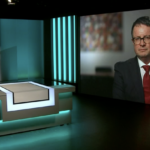There are ever-evolving processes to monitor provider claiming, says a former member of the Medicare Stakeholder Consultancy Committee.
Medicare is always a headline grabber. In the past few weeks, the media has been airing multiple new claims alleging widespread defrauding of Medicare by the medical profession.
Medifraud is apparently everywhere. It’s in the general practices, in the specialist consulting suites, lurking in the shadows during your tele-consult, implanted into the X-ray monitor and embedded in the pathology analyser. Your medical provider is apparently no longer the hero of the past few years and is not to be trusted. What is taking place in those medical settings? What have those providers really been up to? How can it be that successive governments of both persuasions have been sitting idly by and allowing billions and billions of dollars to be sucked out of taxpayer funded coffers? No wonder we have an enormous national debt!
What is the real story? Has the Medicare system really been funding a large cohort of greedy self-serving medical providers whose prime interest is themselves or is there a less sensational, more accurate version of reality?
I sat on the Medicare Stakeholder Consultancy Committee as the RACGP representative for over a decade. The committee was comprised of all the major healthcare peak bodies, government agencies and consumers. Included within the numerous agenda items was a regular presentation on Medicare provider claiming patterns. Medicare provided information and statistics relating to claiming patterns across a range of Medicare rebateable services extracted by its extensive algorithmic software and neural networks. Within the thousands of available item numbers, specific data sets were presented, analysed, sliced and diced by the committee.
What was consistently apparent is that the vast majority of Medicare-eligible providers fell into a normative group in that their billings were similar to their peers and conformed with claims eligibility criteria. There were a small percentage of providers who fell outside the norm, being above the 90% percentile on the bell curve, and a very small number who were above the 95% percentile. Medicare took great interest in this particular cohort and they were generally subject to follow-up by the Medicare internal program review division. Where warranted these providers could also be directly referred to the Professional Services Review (PSR).
The stakeholder committee would repeatedly seek additional information from Medicare to better understand perceived patterns of billing deviations as they were often not easily explained by the raw data alone. It often became evident after multiple inquiries that variations in billing patterns had complex explanations. Some variations were attributed to a lack of clarity in certain Medicare item number rules and their associated explanatory notes (the grey zone). This was often compounded by variable educational advice provided either by Medicare itself or by the different divisions of general practice (later Medicare Locals) or other independent education providers. On occasions, the interpretations were so varied that it led to the stakeholder committee requesting that Medicare and the Department of Health publish official position or guidance statements. As I recall many of these statements were produced. Other variations in claiming patterns were attributed to changes in technology and processes. This was identified in some surgical claim patterns. Item number rules can be slow to evolve with contemporary practice and post-claim audits could sometimes identify the need to modify rule descriptors or introduce new item numbers or even abolish certain item number altogether.
On the flip side, there also existed a cohort of providers who were consistent under-claimers (below the 10% percentile). These providers either provided a clinical service and did not always claim for it or just didn’t provide that particular service. The reasons are varied, but often it was for fear of being investigated for overservicing. As is well appreciated, underservicing can affect healthcare outcomes.
In the majority of identified issues, the most appropriate intervention was and is to provide continuing, consistent and standardised provider education. Nevertheless, let’s be perfectly clear, fraud is fraud. Suspected fraud should be investigated accordingly and if confirmed appropriate sanctions should apply. The initial investigation process is by and large a relatively straightforward process. Was there an entitlement to the service? Was the service provided and claimed? Is there evidence of this service in the medical record?
Medicare has a suite of compliance and enforcement powers. These have been sustainably increased over the past two decades. Twenty years ago, Medicare had limited access to medical notes, no capacity to issue fines and its enforcement powers was limited to medical providers. Today it can request access to medical records and can also fine corporations. In regards to medical record access, the time-proven adage of “poor notes, poor defence, good notes, good defence” never rang more truly. If the service isn’t documented, then it probably didn’t happen and even if it did, it becomes challenging to verify.
The majority of Medicare-eligible healthcare providers appreciate that they are in a somewhat privileged position in that they are both the provider of the and claimant of the service. Most providers do the right thing. I can’t tell you whether or not there is $8 billion being fraudulently extracted out of the healthcare system just like I can’t tell you how many dollars are not being claimed for services performed but not billed. What I am confident in saying is that there are processes and systems in place that continually review healthcare provider claim patterns and that these processes continue to evolve.
It would be naive to say that there aren’t any bad apples. All industries have bad apples, and in our industry these provider bad apples need to be held to account. But to besmirch an entire medical profession based on limited media investigations, one PHD and a few juicy sound bites is a rather inappropriate and extreme way of getting to the truth. It is akin to stating that the entire media is rotten to the core because of the actions of one journalist or tycoon (e.g. Conrad Black).
What is needed right now is a rational conversation regarding the next steps forward. Is an inquiry needed? Perhaps. Does Medicare require more funding to support its compliance actives? Perhaps. Are additional legislative tools required? Perhaps. Is more provider education required? Always. Does the entire Medicare system require a major reform? Absolutely!
But what is needed first and foremost is access to more data from those Medicare servers to help determine and define whether or not a problem really exists and if so what the scale of the problem might actually be and whether the existing guardrails are sufficient. Trial by media is never appropriate or fair.
It seems like it’s time for the stakeholder committee to roll up its sleeves and get back to work.
Dr Nathan Pinskier is a Melbourne GP and practice owner, and past chair of the RACGP Expert Committee for Practice Technonlogy & Management.





